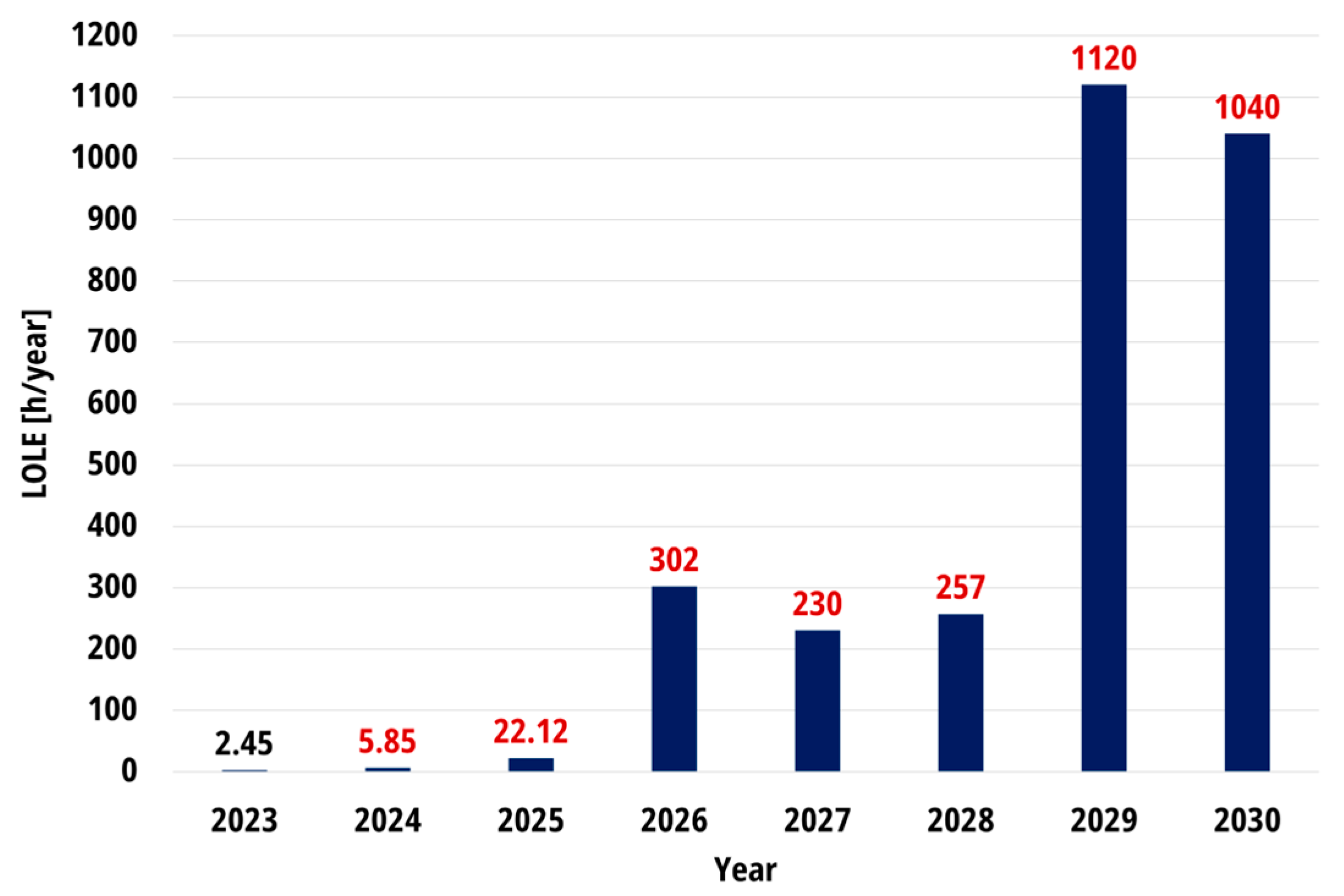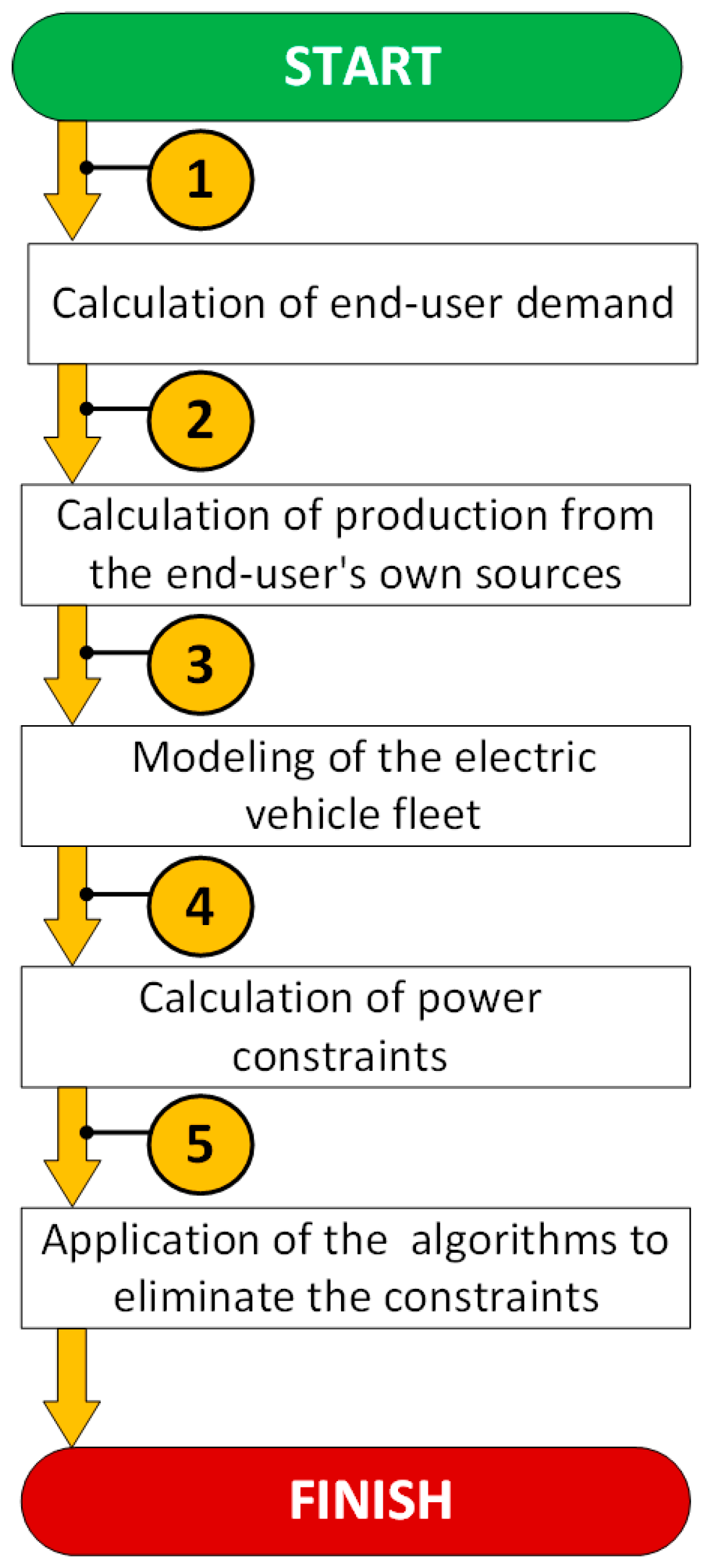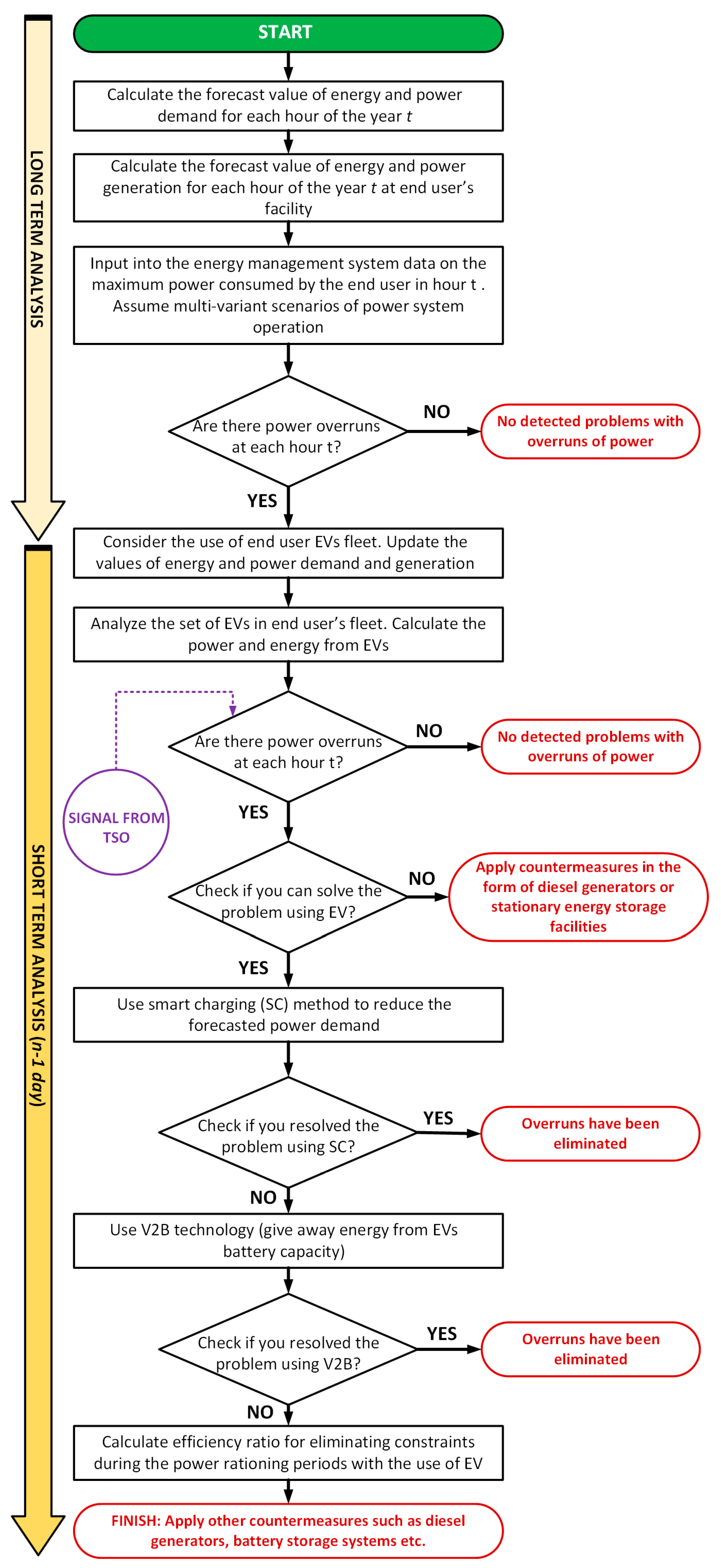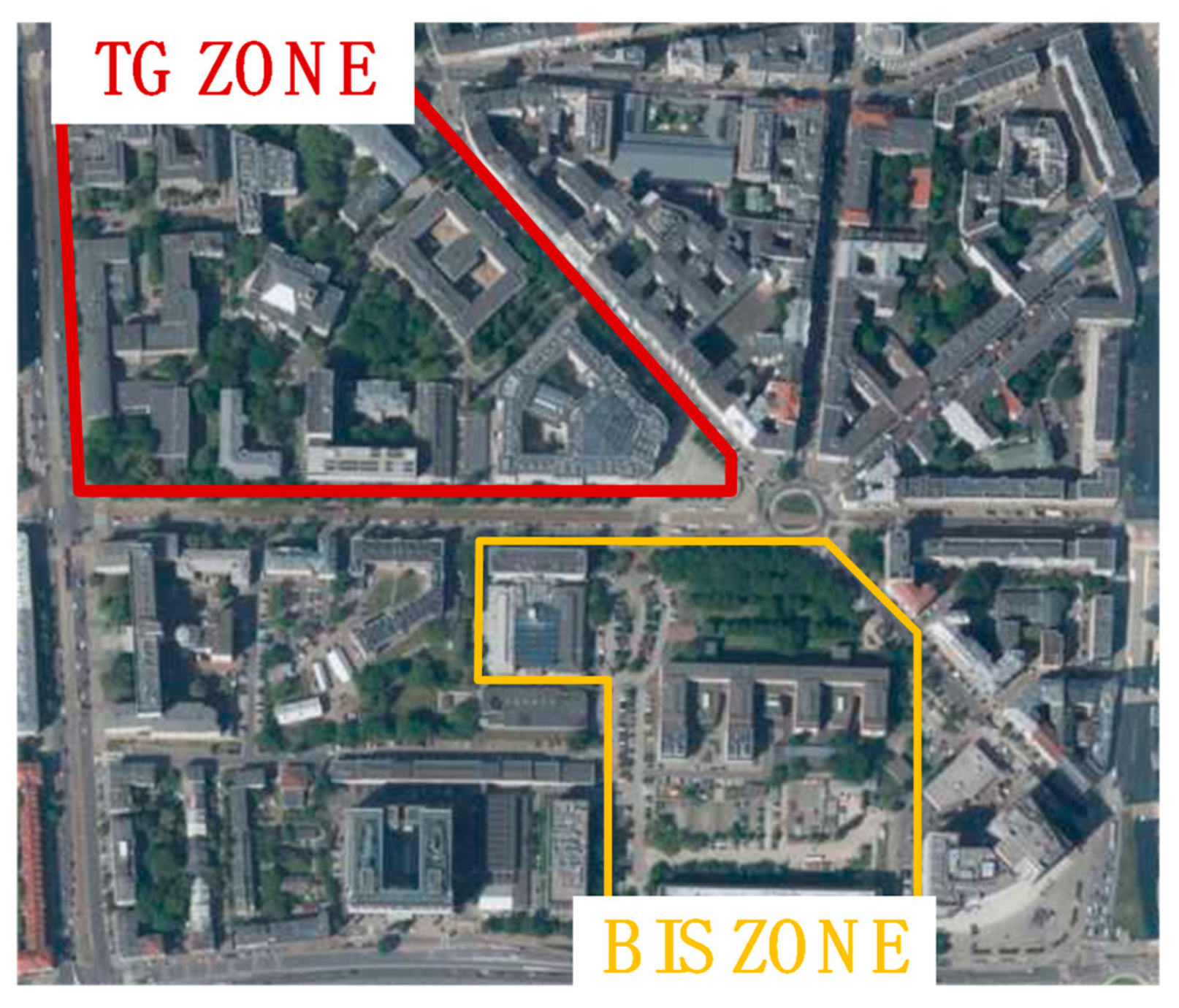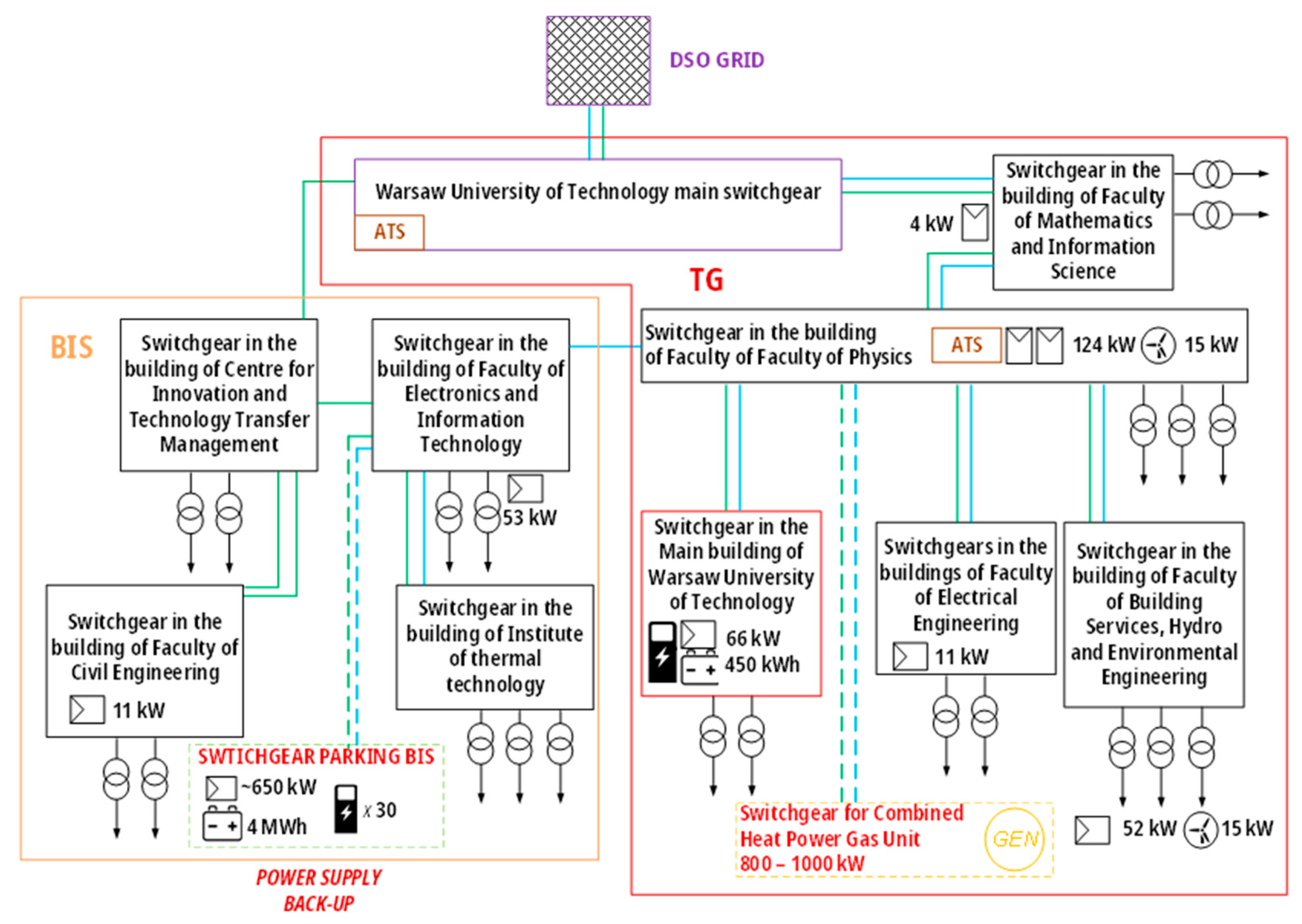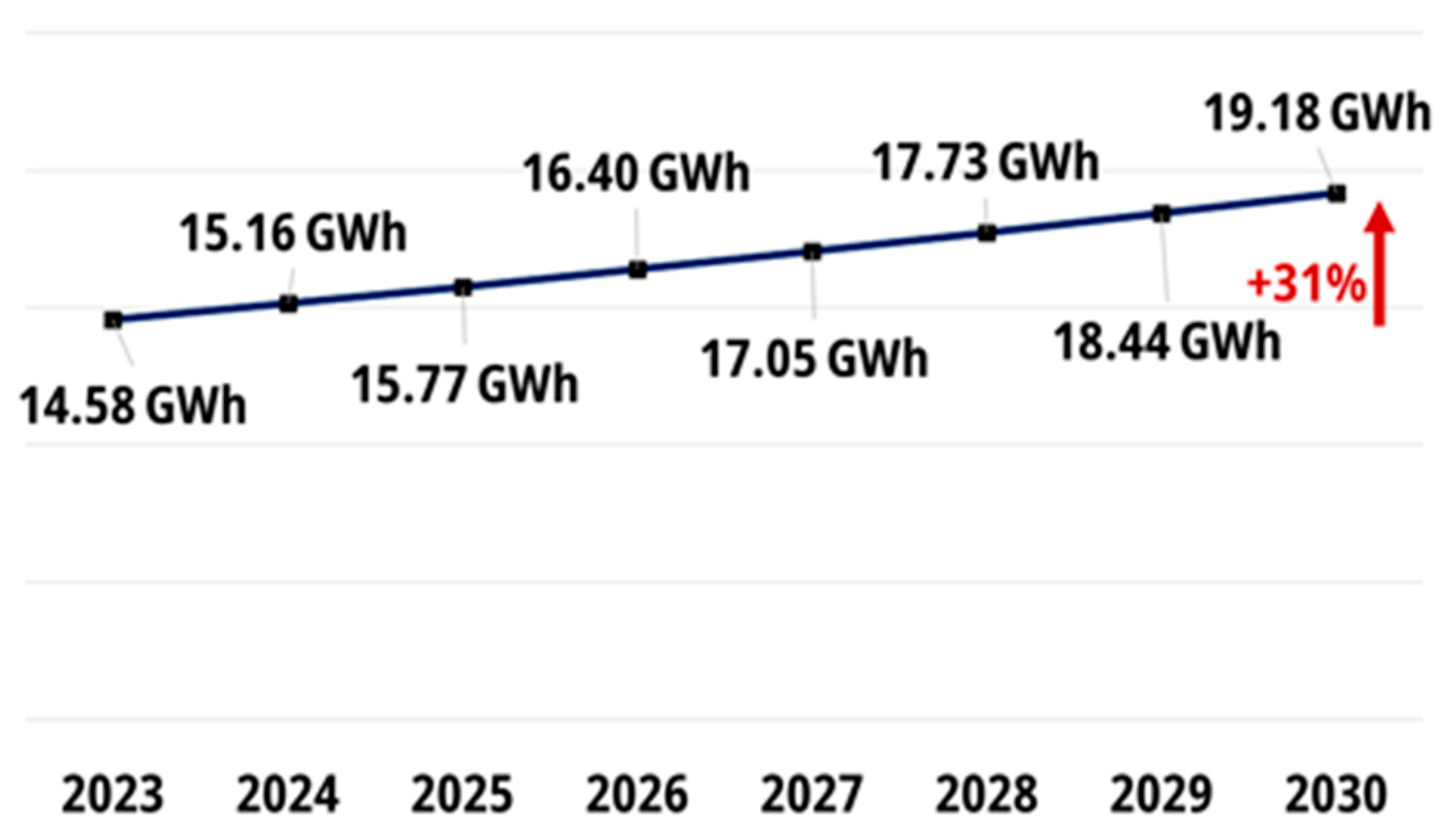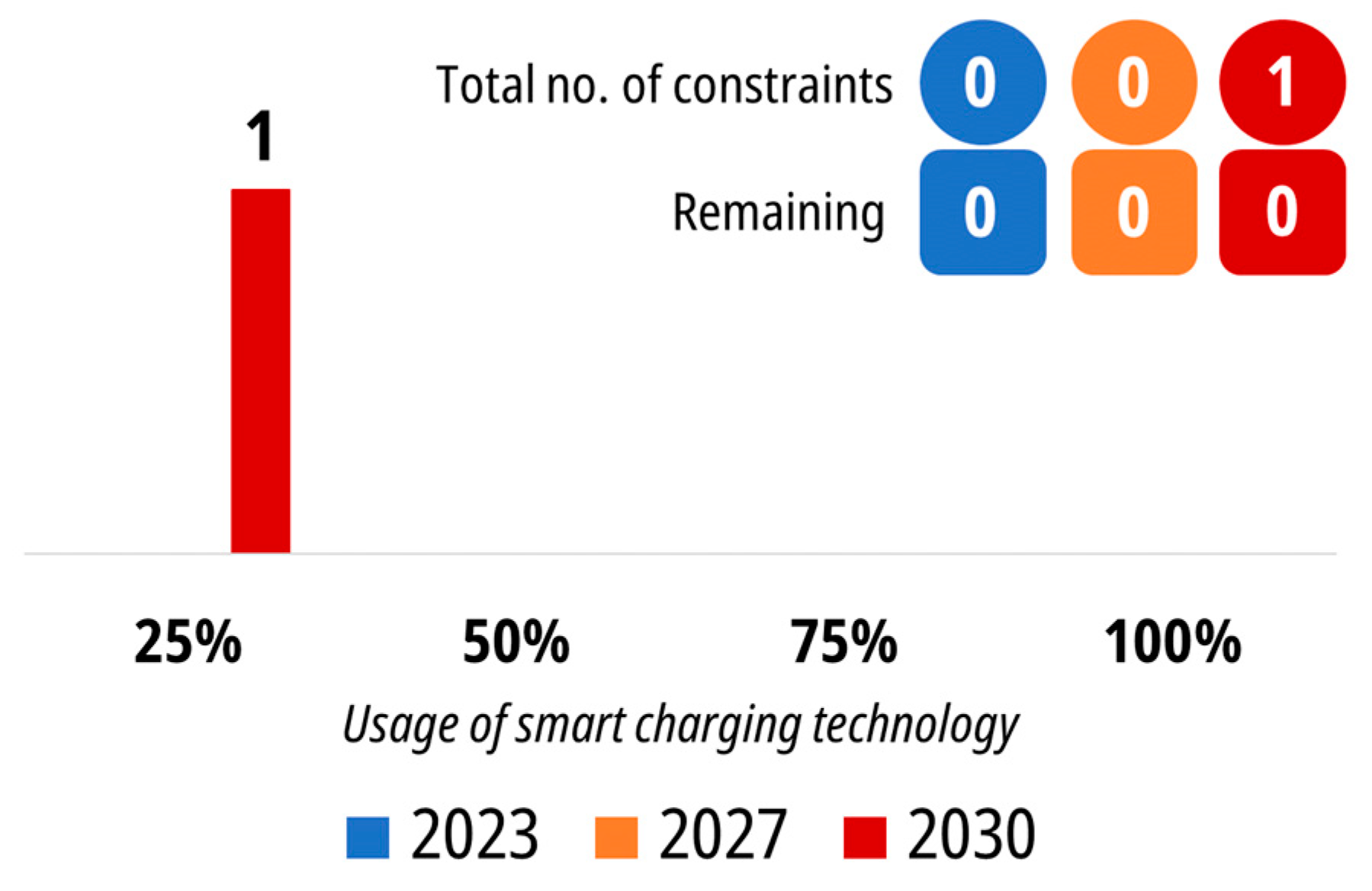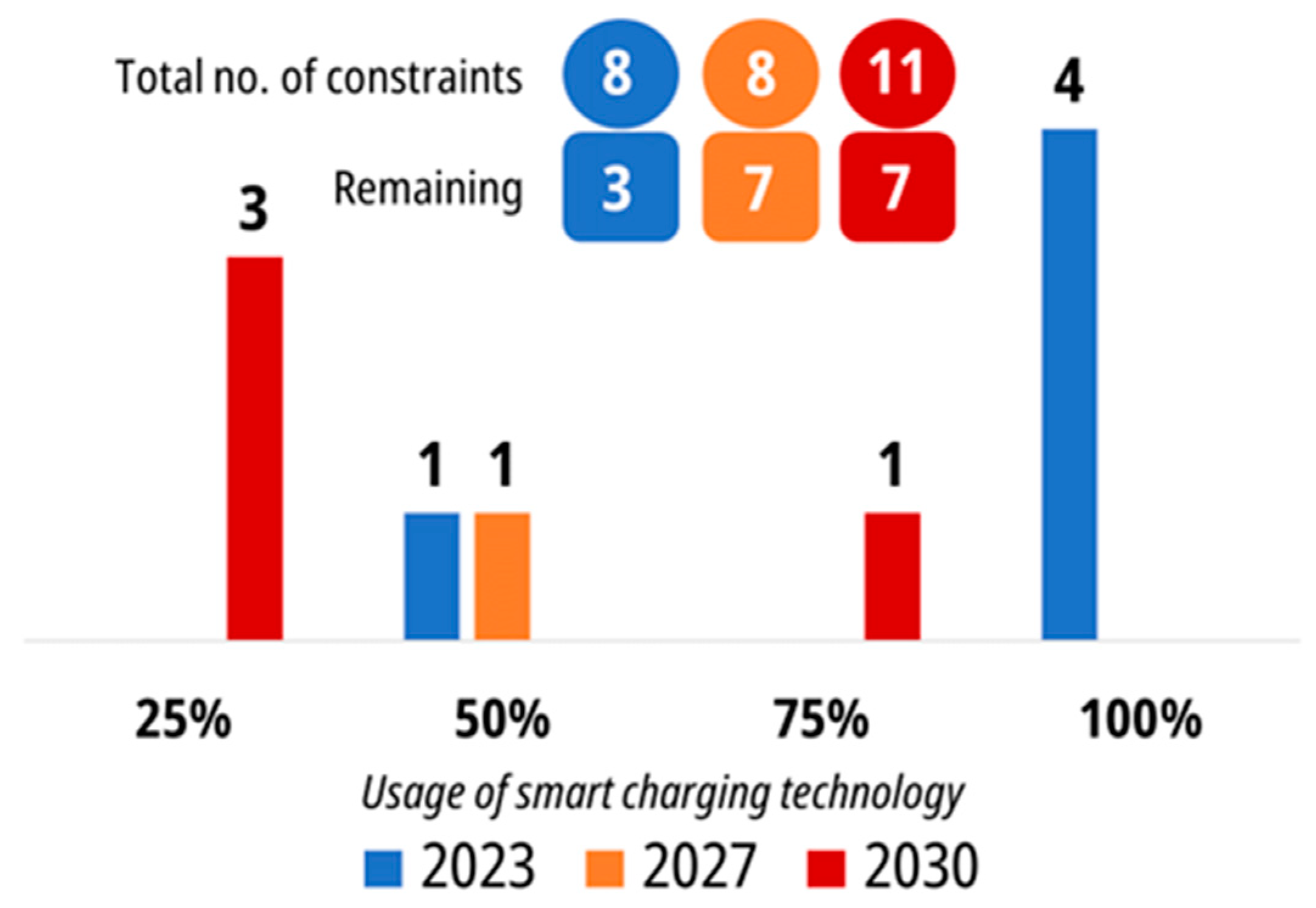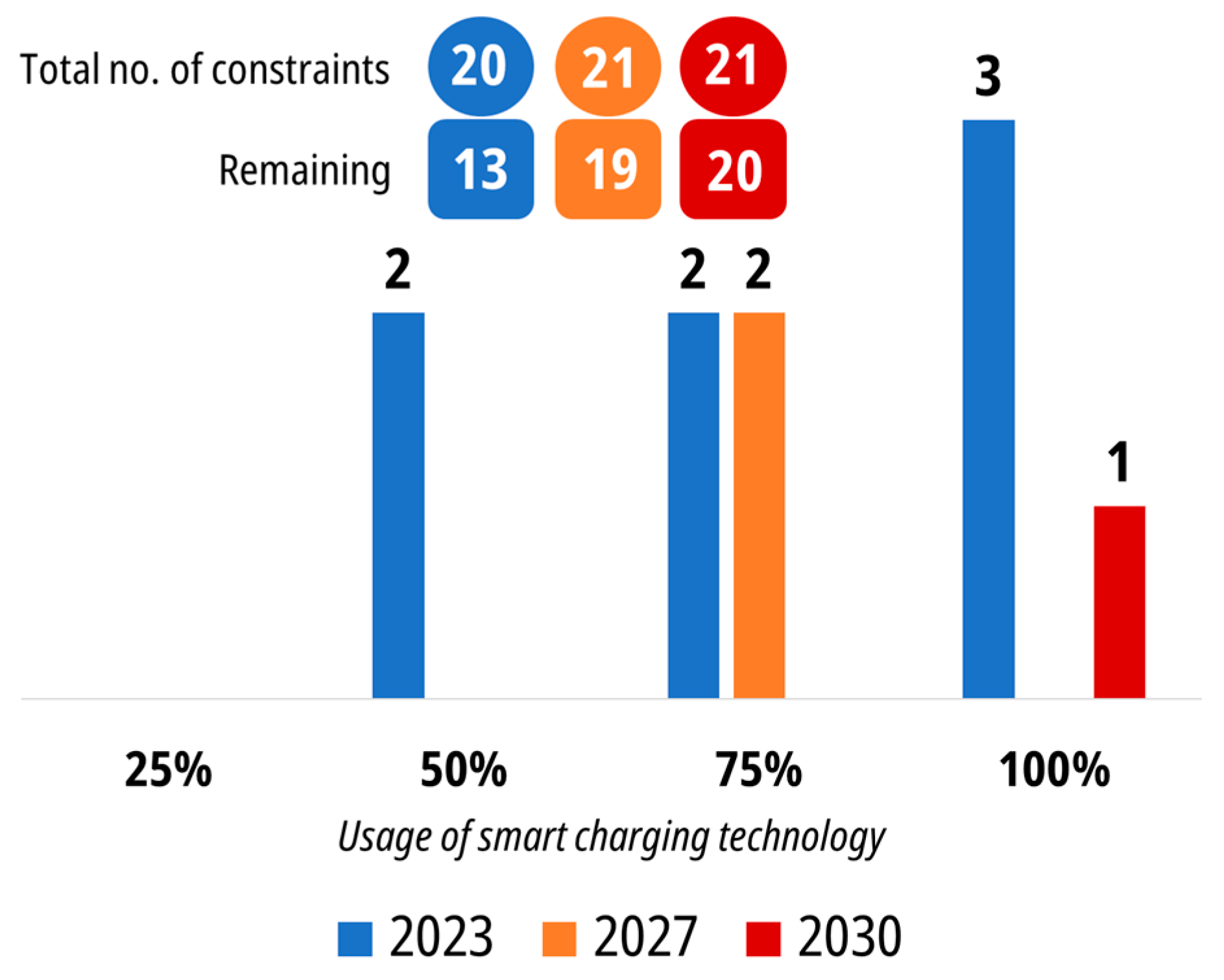1. Introduction
Currently, developed countries, especially European ones, are facing an energy crisis. There are many reasons for this phenomenon. According to the authors of [
1], it began in 2021, when economies were experiencing a renaissance after the first lockdowns of the COVID-19 pandemic [
2]. This has resulted in a significant increase in prices in electricity markets, as well as in natural gas markets [
3,
4,
5,
6]. Countries such as Germany, Austria, Finland, Greece, Poland, and Italy were particularly affected by this situation [
4]. This has led to the introduction of legislative procedures to save electrical energy and natural gas for both public entities and households [
7]. In most cases, this reduction in energy consumption has a significant impact on the standards of living of the people concerned [
8]. The energy consumption issues mentioned above, however, provide a broader picture of the ongoing energy transition. For many years, EU policies have been oriented towards moving away from fossil fuels and imposing increasingly ambitious carbon dioxide (CO
2) reduction targets [
9,
10]. It should be noted that countries such as Germany, Italy, Poland, and the UK [
11,
12,
13,
14,
15] face a gradual process of phasing out coal- and lignite-fired power plants, and, in the case of Germany, the problem also involves the abandonment of the nuclear power plant program for political reasons [
13]. In addition, it should be mentioned that the process of phasing out fossil fuel power plants is associated with a significant increase in capacity from renewable energy sources (RESs) [
16]. Unfortunately, these are mostly intermittent sources, which, as a rule, do not enhance the energy security of countries [
14,
17]. This can have negative consequences in assessing the adequacy of electrical systems [
18]. One of the solutions to this problem is the development of electromobility in the energy transition process [
19,
20]. This latter area has recently become the subject of greater attention. The promotion of electric vehicles (EVs) poses a huge challenge for the transport sector, especially in the process of optimizing travel routes [
21,
22,
23], but also for the energy sector [
24,
25,
26,
27]. Unfortunately, it has often been forgotten that the proper development of electromobility must go alongside the simultaneous development of the energy sector [
24]. It is necessary to keep in mind the problems of connecting EV charging points [
28,
29], optimizing charging costs, both from the side of the EV user and the managers of non-residential facilities [
30,
31], but also optimizing EV charging hours to maximize the use of own low-carbon generation sources [
32,
33]. The design of EV charging stations, consisting of multiple EV charging points and PV installations, often integrated with battery electric storage systems (BESSs), has become an extremely popular part of research [
34]. These are known as “solar carports” [
35,
36]. Their application can be numerous. They can be established at workplaces, in city parking lots, or in the driveways of single-family homes [
36,
37]. In addition, through the use of technologies, such as smart charging (SC) or vehicle-to-building (V2B) technologies, the electricity transferred to or from a vehicle can be managed in an economically and technically optimal manner [
38,
39,
40].
As electromobility grows, so does the demand for power and electricity in the national power systems. It should be mentioned at this point that the process of transitioning to a low-carbon energy sector requires, for many countries, the phasing out of conventional power plants. In addition, the increase in RES power generation, without the corresponding development of electricity storage technologies, causes increasing instability in electricity production [
41,
42]. The aforementioned situation may negatively affect the adequacy of the power system. Thus, the main challenge for transmission system operators (TSOs) is to maintain the capacity in operation in the system at an appropriate level, so as to provide an adequate operating reserve to cover sudden load changes or as a countermeasure in case of failure to generate units [
43]. In Poland, for example, this represents 9% of the current power demand [
44]. There is an indicator used in power system reliability theory describing the frequency of situations in which the reserve level may not be covered that is called the LOLE (loss of load expectation) [
43]. The security standard of electric power systems can also be expressed using this indicator [
18]. According to the authors of [
18], the most common LOLE value defining the considered standard is 3 h in EU countries. This value is in force in countries such as Poland, Italy, Greece, and Belgium [
18,
45]. As mentioned, the LOLE parameter is closely related to the adequacy of power systems. A study prepared by the ENSTO-E, the European association for the cooperation of transmission system operators, highlighted that the safety standards for the operation of electricity networks are outdated [
46]. These problems are most often associated with the withdrawal of financial support for fossil fuel power plants under capacity mechanisms. According to the authors of [
46], practically all of continental Europe will experience overruns of security standards for system operation as early as 2025 if capacity mechanisms are withdrawn. However, it should be noted that according to Regulation 2019/943 of the European Parliament and of the council of 5 June 2019 on the internal market for electricity, from 2025, it will not be possible to provide state aid to generation units with unit CO
2 emissions greater than 550 kg CO
2/MWh [
47]. Thus, the probability of exceeding safety standards is highly likely. The LOLE values reported for EU countries are in the range of 1 h/year to even several hundred h/year [
46]. It is also worth noting that member countries also perform electricity system adequacy analyses on their own.
Figure 1 shows the projected values of the LOLE indicator for Poland, according to the data provided by the Polish transmission system operator.
The LOLE curve presented in
Figure 1 leads us to the conclusion that there will be a significant increase in this indicator between 2023 and 2030. This means that, according to the forecasts of the Polish TSO, this indicator will be exceeded as early as 2024. This means that a certain category of energy consumers will have to start rationing energy, that is, limiting their consumption during a period of restriction imposed by the transmission operator [
49]. Public administration units, but also universities, may be particularly vulnerable to such actions [
50]. If this kind of situation would happen to an entity such as a university, whose main activity is research and teaching, in the worst case, it could lead to a reduction in this activity in a drastic way or even a suspension of all essential activities [
51]. If we consider that a suspension of teaching activity would only lead to a certain delay in the completion of the program, a delay in the field of scientific research could be the source of enormous financial losses due to fixed deadlines for carrying out research programs financed by the government or private entities. It is therefore necessary to think about the effective future use of EVs in the electricity management process on university campuses because, while being a volatile means of storing electrical energy, they can also represent a significant reserve of electrical energy. Therefore, universities, particularly technical ones, thanks to their human resources, will be the ideal place to promote electromobility and the potential use of EVs as mobile energy storage units. Thus, this article presents the possibilities of using EVs in electricity management activities during power rationing periods.
Section 2 provides an overview of EV application solutions in microgrids and presents novelties.
Section 3 presents the research methodology for the use of EVs in the energy management process during power rationing periods.
Section 4 presents the assumptions for the case study using the main campus of Warsaw University of Technology, and
Section 5 presents the results of the analyses and further discussion.
3. Methodology
First of all, it should be mentioned that the methodology described in this chapter concerns research that is currently in the proof-of-concept phase. This means that the solution presented below is a mathematical model of an internal service that can be introduced by the owner or possibly the end user of the facility. In general, the methodology presented in this article is applicable to all non-residential buildings, including critical infrastructure. It aims to highlight that electric vehicles with the application of smart charging or V2B technologies can actively participate in the process of balancing the end user’s demand during power rationing periods. This methodology is divided into 5 main parts: calculation of end-user demand, calculation of production from the end user’s own sources, modeling of the electric vehicle fleet, calculation of power constraints, and application of the authors’ algorithms to eliminate the aforementioned constraints.
Figure 2 shows a basic block diagram of the proposed methodology.
All analyses related to the introduction of power rationing and their potential mitigation by means of distributed generation resources, including electricity storage, should begin with an assessment of the power and energy demands of the facility under study. Thus, for each hour of the day of the year, it is possible to determine a certain level of power demand over 1 h of the studied facility,
, and consequently its energy consumption at a given hour (
t),
, in the year for which we have historical electricity consumption data,
ypl. Throughout the article, the following equation should be used when defining electricity (consumed or given away):
Since energy security analyses should be performed in the long term (taking into account the duration of the investment process or the electricity management strategy for a given subject), it is necessary to take into account correction factors indicating the trend of an increase or decrease in electricity demand. The research presented in this article is a follow up to the work carried out in [
51], so it was assumed that for the target year of investment,
yf, the power demand at a given hour,
t, can be determined:
where
—the power demand of the studied facility at hour
t in year
yf, expressed in kW, and
—a correction coefficient indicating the trend towards an increase or decrease in the electricity demand of the studied facility.
By analogy, based on Equation (1), it is possible to calculate the demand for electricity of the studied facility at hour t in year yf—.
In the paper published by the authors of [
51], the
coefficient was determined for each hour based on historical data from selected years for which the facility manager had energy consumption data for each hour of the day. In the present study, it was decided that the value of this coefficient should be one for all hours of the day and would be equal to the average value of the calculated
coefficients, i.e.,
. Equation (2) thus takes the form:
Thus, the facility’s electricity demand,
, based on Equation (1), also depends on the average value of the coefficient
. Based on the work of [
51], a method for calculating the capacity at the studied facility, at each hour of year t, was also determined:
where
TECHi—the set of distributed generation technologies planned for operation at the analyzed facility;
i—the element of the set
TECHi; and
—generated capacity of distributed generation technologies at the analyzed facility, expressed in kW.
Therefore, it is possible to calculate the volume of electricity planned to be produced in hour
t from distributed generation sources,
, based on Equation (1). Thus, Equations (3) and (5) describe the operating points of the facility’s electric power equipment (consumption and generation) at each hour,
t, of year
yf. In addition, the operation of electric vehicle supply equipment (EVSE) must be modeled. The purpose of this article was to see whether EVs can help minimize the negative effects of introducing power rationing periods. At first glance, it seems that electric vehicles during the operating hours of the analyzed facility will not be able to help; in fact, they make the situation worse, as they are an additional energy load. However, through the use of smart charging (SC) or dynamic load management (DLM) [
27,
88] and vehicle-to-building (V2B) technologies, it is possible, through appropriate electricity management, to achieve a positive effect in the form of shifting the load to off-peak hours, intelligently shutting down the charging point when there are periods with a restriction in electricity consumption, or even generation operation of EVs for the benefit of the facility under study (for the EVs allowing for such an operation). Thus, two types of charging points were modeled at the studied facility: those enabling EV charging with smart charging technology (the number of charging points is equal to
), and those allowing for EVs to be discharged within the framework of V2B technology (the number of V2B charging points is equal to
). For the purposes of this work, it was assumed that V2B charging points are only used for discharging and must be available at other times. Vehicle charging is only possible using them as a reserve, e.g., when the facility under study would need to increase its demand as part of providing flexibility services on an emergency basis. This meant that when modeling the power and energy demands of the charging points, they were not taken into account, since the use of V2B technology is one of the facility administrator’s countermeasures. It was also assumed that the EVSE operates at a constant power for 1 h. Therefore:
where
—power drawn from the charging point with smart charging technology applied, expressed in kW;
—the factor that determines the level of power consumed by a given charging point; and
—power drawn from all charging points in the facility, expressed in kW.
It should be noted that EV charging stations can operate with multiple operating points at a given hour (
t). Thus, the coefficient
can be mathematically written as a
j-element vector of operating points:
Knowing that the EVSE operates at a constant power for 1 h, the electricity demand of the charging points, , can be determined based on Equation (1).
Thus, the power operating point of the facility under study can be determined as follows:
where
—the power balance of the facility under study at hour
t of year
yf, taking into account the demand for electricity, the generation of electricity from their own sources, and the operation of the charging station, expressed in kW; and
—the electricity balance of the facility under study at hour
t of year
yf, taking into account the demand for electricity, the generation of electricity from their own sources, and the operation of the charging station, expressed in kWh.
A crucial element of the presented methodology is the validation by the manager of the facility under study of restrictions on electricity consumption and supply (power rationing) to end users. It has been assumed that each country or energy area has its own measures and methods for implementing such restrictions. For example, in Poland, there are so-called power supply tiers that determine the values of power consumption, depending on the operating state of the national power system. Thus, we let
determine the value of hourly power that can be consumed by a given end user. By applying a simplification, the power consumed in a given hour (
t) will also be equal to the energy consumed by the consumer in that hour (
). More extensively, the methodology for determining the value of power supply tiers for Poland will be presented in
Section 4, when discussing the case study. Thus, for each hour of year
t, it was necessary to verify that the limits set by the relevant power system operators are followed, i.e., the below condition must be met:
It should be mentioned, however, that the process of imposing constraints on power consumption for the end user is dynamic and may only apply to selected days or even hours. The foundation in the presented approach of solving this problem was to calculate the aforementioned values for the energy balance of the facility in the long term and simultaneously analyze them in the short term (n − 1 day). This means that the value should be verified on an ongoing basis and input by the relevant technical services into the facility’s energy management system (EMS).
The methodology presented in this article was therefore based on the possibility of using EVs in the process of balancing and improving the energy security of the installations. However, it should be emphasized that the approach of using EVs to mitigate the negative effects of power rationing presented in this article is only a certain proposition of the idea of using EVs, and it has not yet been tested on a real infrastructure using both adequate real equipment and a communication infrastructure using the protocols used to manage communication between charging stations and other actors that make up the EMS. Thus, if the condition presented in Equation (10) is met, then it is possible for the load examined to consume electricity up to the subscribed power, including the use of charging stations for electric vehicles. However, we must not forget that it is up to the manager of such an installation to try to optimize their economic efficiency. This involves, among other things, using, in terms of electric vehicle charging, advanced DLM tools to shift charging to off-peak hours if this possibility exists. One of the important effects of the employment of DLM is the more pronounced fluctuation of energy prices on the day-ahead-type stock market for electric energy. We are not going to dwell too much on this subject, as it is outside the scope of the research presented in this article; hence, the rest of this article will not develop this aspect. From the point of view of this article, an interesting case was the situation in which condition (10) was not satisfied for certain periods of time of the year. Two countermeasures were defined, which use EVs in the process of dealing with electricity supply constraints:
However, we must first define the technological and legislative basis for the use of electric vehicles and charging stations. Currently, the formal and legal situation of EVs is quite complicated. There is not yet a clear legal framework regarding the introduction of V2X technology (including V2B) in most energy markets [
89]; it has been assumed that the electric vehicles that will participate in the transmission of energy to the end user in question belong to that end user (e.g., service vehicles). We also assumed that in the coming years of development of electromobility, legal acts will be adapted in such a way that the provision of V2X services will be facilitated [
90]. So, the start point of the consideration is that they must be registered in a dedicated ICT system, and with the help of communication modules, their parameters can be defined at any time. In this article, a similar method of describing EVs using a vector was used as in the work published by the authors of [
90]. However, due to the fact that EVs are to belong to the fleet of the manager of the facility under study, the vector describing the
n-th electric vehicle (
uEVn) was simplified:
where
—identification number of the
n-th electric vehicle;
—the state of charge of the
n-th vehicle’s battery at the time of connection and the start of transmission of electricity from or to the electric vehicle, expressed in %;
—the state of charge of the
n-th vehicle’s battery at the end of the process of transferring electricity from or to the electric vehicle, expressed in %;
—nominal capacity of the battery of the
n-th electric vehicle, expressed in kWh;
—functionality of the
n-th EV, defined as a charging-only vehicle (value equal to 1) or charging and discharging vehicles (value equal to 2); and
—expected dwell time of the
n-th EV at discharging or at the charging site, in hours.
Based on the input data for the
n-th EV, it was possible to determine the available electrical energy that the EV will consume during the charging process or yield during the discharging process:
whereby the following conditions must be met:
where
—electricity consumed by the
n-th EV during the charging process, in kWh;
—electricity yield via the
n-th EV during the discharging process, in kWh;
—efficiency of the EV charging process, expressed in %;
—efficiency of the EV discharging process, expressed in %;
—the maximal state of charge of the
n-th vehicle’s battery, expressed in %; and
—the minimal state of charge of the
n-th vehicle’s battery, constrained by the technical limitations, expressed in %.
It is also important to note that the level of
, when a decision is made to discharge an EV, will also depend on the distance the EV is from the discharge service point:
where
—the state of charge of the
n-th vehicle’s battery, at the time of the decision of whether to provide the V2X service, expressed in %;
—average electricity consumption of the
n-th electric vehicle, expressed in kWh/km; and
—the distance between the
n-th electric vehicle and the point where the discharging service is provided, expressed in km.
It should be noted that if a given EV or set of EVs does not have the functionality to supply electrical energy from the battery to the grid/consumer, which is notably due to the absence of the CHAdeMO or CCS 3.0 charging standard, then the installation manager can only apply the first countermeasure, namely smart charging. Although this is a drawback of the proposed approach, a significant increase in the number of EVs with the CCS 3.0 standard in the EU is expected, as it is to be a unified standard for vehicles operating in member states. EVs for which charging power is reduced using smart charging technology were assumed to be a separate set of EVs operated by the facility manager. This means that the total set of EVs,
, can be described using a matrix [
90]:
It is now necessary to divide the set
into two subsets, defining vehicles that only perform charging operations (i.e., those whose parameter
) and those that can be charged and discharged (
):
where
k—the subsequent EV charging at the studied facility; and
m—the subsequent EV charging or discharging at the studied facility.
Thus, given the number of rows of the set
:
and:
where
—the total number of EVs in the set
;
—the number of EVs in the set
; and
—number of EVs in the set
.
Having the basic information on electric vehicles, it is necessary to define the value of the exceedances for each day of the year, or more precisely, for each hour, assuming that the power consumed during a given hour (
t) is constant and equal to the value of the electricity consumed:
Further consideration was given to the hours (
t) in which the value calculated in Equation (25) was greater than 0. Next, it was necessary to check whether there was a non-zero value of
for the parameter
in the hour of the occurrence of overruns, i.e., for the record
. In such a situation, the electric vehicles were said to be in the studied facility and charged. Thus, for these hours of the year (narrowing down to a certain period), it can be said that smart charging technology should be applied. It should also be remembered that the application of smart charging technology according to the assumptions of this methodology can only be applied to the EVs whose describing parameter
. It was also assumed that each vehicle analyzed within the set has its own charging point. Thus:
The use of smart charging technology implies the simplest regulation of the charging power factor
. More advanced models can employ tracking controllers that adjust to the shape of the facility’s power demand profile. Nevertheless, for the purposes of this methodology, stepwise regulation of the level of charging point power demand was used. We let
determine the charging reduction factor. By analogy with the
factor, a
j-element vector was created to describe the
factor. Thus:
As a result, it was possible to calculate the level of constraint after the application of smart charging technology,
, according to Equation (6):
knowing that:
thus:
The parameter
may take two values. If the constraint in power consumption is completely reduced (the difference referred to in Equation (34) will be less than or equal to 0) by applying smart charging technology, the parameter
will take values of 0, i.e., the constraint will be removed. Otherwise, it will continue to exist and will be equal to the aforementioned difference. Thus:
The aforementioned actions can be written using the following Algorithm 1:
| Algorithm 1. Procedure of using smart charging technology in eliminating power constraints |
- (1)
START: Calculate the forecast for electricity and power demand and generation for each hour of the year t. - (2)
Input into the energy management system data on the maximum power consumed by the end user in hour t—. Assume multi-variant scenarios of power system operation. - (3)
Compare the values of the energy balance of the facility, and the maximum that can be consumed by the end user, , without use of energy from EVs. - (4)
CHECK: Are there power overruns at hour t due to the potential occurrence of unfavorable conditions in the power system (? YES: Potential countermeasures have to be applied to reduce the power consumed in a given hour. Save the overrun values. Proceed to analysis in day n − 1—step (5). NO: Finish the assessment of the problem of overruns of contracted consumed power. - (5)
Run the procedure of the potential use of EVs to mitigate the negative effects of power constraints. Calculate the available power and energy from the EVs. Update the forecast of demand and generation for each hour (t). - (6)
Analyze the set of EVs in the end user’s fleet (target is all EVs, including private ones) and operate them within a dedicated ICT system, which allows us to monitor the parameters of EVs, - (7)
Compare the values of the energy balance of the facility, and the maximum that can be consumed by the end user, , including the use of EV battery capacity. - (8)
CHECK: Are there power overruns at hour t due to the occurrence of unfavorable conditions in the power system (signal from TSO) or the normal operations of the power system, while using distributed generation resources and a set of end-user EVs (? YES: Apply countermeasures to reduce the power consumed in a given hour. Save the overrun values. NO: Finish the assessment of the problem of overruns of contracted consumed power. - (9)
CHECK: At hours when , are the EVs being connected, i.e., ? YES: Use smart charging (SC) and V2B technology to reduce the power consumed by the object. Go to step (10). NO: Finish the algorithm. Apply countermeasures in the form of diesel generators or stationary energy storage facilities. - (10)
Read EV data from the local ICT system and see which are connected to the SC and V2B charging points—analysis of sets and . - (11)
Determine EV charging power. - (12)
Set the degree of reduction according to the coefficient . - (13)
Calculate the EV charging reduction power in SC technology, and then calculate the new overrun value, . IF: , THEN: Take the value of this constraint equal to 0. The constraint has been eliminated. ELSE: Take the value of the constraint , and then go to step (14). - (14)
Repeat steps (12) and (13) until the reduction possibilities are fully depleted, i.e., the entire j-element set of coefficients has been used. - (15)
CHECK: If there are further overruns of after step (14): YES: Define the values of these overruns and proceed to solve the problem with V2B (Algorithm 2). NO: Finish. Overruns have been eliminated. There is no need to use V2B technology.
|
After analyzing Algorithm 1, there may be a reason to use V2B technology. As mentioned earlier, it has been assumed that the EVs described using the
set can be used for sharing their battery capacity for the benefit of removing the power rationing constraints for the end user under analysis. Based on Equations (13) and (20), it was possible to calculate, for each EV belonging to the
set, the amount of electricity that can be sent from the battery to the end user under V2B technology. Thus, the result of this operation was a vector:
The total volume of electricity available from the
o-th number of EVs is equal to:
Then, it is necessary to divide the hours
t into 24 h periods corresponding to one day. One should assign the
constraint values to the respective hours (
t) of the year, and therefore also to the days. Then, the values of
should be ranked, along with the respective hours of the day from smallest to largest. The aim of employing this measure was to identify the hours in which electric vehicles using V2B could reduce as many overruns as possible. The conditions for verifying the proper use of V2B technology were to model whether the EVs are or will be on the site during the selected time interval for the elimination of the selected constraints, whether the total discharge power is greater than the overrun power,
, and whether it is not greater than the technical capacity to transmit power from the EV to the consumer, also taking into account the number of EV discharge points. If the total discharge power,
is less than the overrun power,
, it is necessary to take the maximum value of the
value equal to the ratio of the total energy stored in the EV and the unit of time (1 h). After checking which constraints have been removed and for which hours, it was necessary to calculate new constraint values—
. Thus, the value of
can take the following forms, depending on whether the aforementioned conditions are met:
Lastly, it remained to check whether the power rationing constraints were retained:
If not all the constraints have been removed, i.e., if there are still positive values after analyzing the individual times (
t) using Equation (35), further countermeasures should be used; therefore, other energy sources, such as fixed electricity storage installations, gas engines, or even diesel generators should be employed. The measures derived from EV discharging should be carried out until there is available energy in the EV, i.e.,
. For the aforementioned measures, the procedure for using V2B technology in the elimination of power consumption constraints is as follows:
| Algorithm 2. Procedure of using V2B technology in eliminating power constraints |
- (1)
START: Define the hours (t) for which power overruns occur after applying smart charging technology and provide the values of these limits, . - (2)
CHECK: Is/will every n-th EV used for V2B technology be on the site for hours t with further constraints ? YES: Specify their . Go to step (3). NO: Calculate/estimate their distance to the discharging point and calculate . Go to step (3). - (3)
Using the parameters specified in the set, calculate the available usable electrical energy found in the EV batteries. Specify the vector and its total volume, . - (4)
For a given time period, rank the constraints as follows: min → max - (5)
Calculate the power overruns after applying V2B technology, . IF: , THEN: Take the value of this constraint equal to 0. The constraint has been eliminated. Go to step (6). ELSE: Take the value of this constraint , and then go to step (6). - (6)
Subtract the volume of electricity resulting from the use of V2B technology, , from the volume, . - (7)
CHECK: Is the difference from step (6) positive: ? YES: Go to step (8). NO: Not all the constraints have been removed. Go to step (9). - (8)
CHECK: If there are further overruns? YES: Repeat steps (5)–(7). NO: Finish the algorithm—all constraints have been removed with SC and V2B technologies. - (9)
Define the overrun volumes and hours for which the EVs failed to remove the constraints. Apply other countermeasures and finish the algorithm.
|
At this stage, we know to what extent the use of electric vehicles contributed towards eliminating the constraints during the period of energy rationing; therefore, it was possible to calculate the efficiency ratio of V2B and SC technologies for a given end user as follows:
where
—the efficiency ratio for eliminating the constraints during the power rationing periods with the use of EVs, expressed in %;
—the number of hours (
t) in which the EVs eliminate the power consumption constraints; and
—the number of hours (
t) in which power consumption constraints occurred.
Figure 3 shows a detailed block diagram of the proposed methodology for eliminating power demand constraints using EVs.
 ) were selected. Daily baseline profiles were developed for the years 2023, 2027, and 2030. Table 2 shows the volumes of electricity consumed in consecutive hours of the day for the aforementioned profiles, and also the operating profiles of the generation technologies, which were previously defined in Table 1.
) were selected. Daily baseline profiles were developed for the years 2023, 2027, and 2030. Table 2 shows the volumes of electricity consumed in consecutive hours of the day for the aforementioned profiles, and also the operating profiles of the generation technologies, which were previously defined in Table 1.